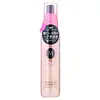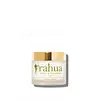What's inside
What's inside
 Key Ingredients
Key Ingredients

No key ingredients
 Benefits
Benefits

 Concerns
Concerns

 Ingredients Side-by-side
Ingredients Side-by-side

Water
Skin ConditioningDipropylene Glycol
HumectantGlycerin
HumectantDimethicone
EmollientCetearyl Alcohol
EmollientPEG-60 Hydrogenated Castor Oil
EmulsifyingBehentrimonium Chloride
PreservativeAminopropyl Dimethicone
Lactic Acid
BufferingStearyl Dihydroxypropyldimonium Oligosaccharides
Arginine
MaskingHydroxyethyl Urea
HumectantSteartrimonium Chloride
PreservativeHoney
HumectantSodium Hyaluronate
HumectantHydrolyzed Conchiolin Protein
Skin ConditioningCetyl Ethylhexanoate
EmollientIsopropyl Alcohol
SolventStearyl Pg-Dimethylamine
Isoceteth-10
EmulsifyingPropylene Glycol
HumectantStearyl Alcohol
EmollientDisodium EDTA
Ammonium Lactate
BufferingButylene Glycol
HumectantSodium Carbonate
BufferingWater, Dipropylene Glycol, Glycerin, Dimethicone, Cetearyl Alcohol, PEG-60 Hydrogenated Castor Oil, Behentrimonium Chloride, Aminopropyl Dimethicone, Lactic Acid, Stearyl Dihydroxypropyldimonium Oligosaccharides, Arginine, Hydroxyethyl Urea, Steartrimonium Chloride, Honey, Sodium Hyaluronate, Hydrolyzed Conchiolin Protein, Cetyl Ethylhexanoate, Isopropyl Alcohol, Stearyl Pg-Dimethylamine, Isoceteth-10, Propylene Glycol, Stearyl Alcohol, Disodium EDTA, Ammonium Lactate, Butylene Glycol, Sodium Carbonate
Water
Skin ConditioningLactobacillus/Ilex Paraguariensis Leaf Ferment Filtrate
Skin ConditioningCamellia Sinensis Leaf
PerfumingRosmarinus Officinalis Leaf
Skin ConditioningHelianthus Annuus Seed Oil
EmollientBehentrimonium Methosulfate
Cetearyl Alcohol
EmollientOenocarpus Bataua Seed Oil
EmollientCocos Nucifera Oil
MaskingStearalkonium Chloride
PreservativeTheobroma Cacao Seed Butter
EmollientGlycerin
HumectantCitric Acid
BufferingLavandula Angustifolia Oil
MaskingEucalyptus Globulus Oil
Potassium Sorbate
PreservativePanthenol
Skin ConditioningCocoyl Hydrolyzed Quinoa Protein
Water, Lactobacillus/Ilex Paraguariensis Leaf Ferment Filtrate, Camellia Sinensis Leaf, Rosmarinus Officinalis Leaf, Helianthus Annuus Seed Oil, Behentrimonium Methosulfate, Cetearyl Alcohol, Oenocarpus Bataua Seed Oil, Cocos Nucifera Oil, Stearalkonium Chloride, Theobroma Cacao Seed Butter, Glycerin, Citric Acid, Lavandula Angustifolia Oil, Eucalyptus Globulus Oil, Potassium Sorbate, Panthenol, Cocoyl Hydrolyzed Quinoa Protein
Alternatives
Ingredients Explained
These ingredients are found in both products.
Ingredients higher up in an ingredient list are typically present in a larger amount.
Cetearyl alcohol is a mixture of two fatty alcohols: cetyl alcohol and stearyl alcohol. It is mainly used as an emulsifier. Emulsifiers help prevent the separation of oils and products. Due to its composition, it can also be used to thicken a product or help create foam.
Cetearyl alcohol is an emollient. Emollients help soothe and hydrate the skin by trapping moisture.
Studies show Cetearyl alcohol is non-toxic and non-irritating. The FDA allows products labeled "alcohol-free" to have fatty alcohols.
This ingredient is usually derived from plant oils such as palm, vegetable, or coconut oils. There is debate on whether this ingredient will cause acne.
Due to the fatty acid base, this ingredient may not be Malassezia folliculitis safe.
Learn more about Cetearyl AlcoholGlycerin is already naturally found in your skin. It helps moisturize and protect your skin.
A study from 2016 found glycerin to be more effective as a humectant than AHAs and hyaluronic acid.
As a humectant, it helps the skin stay hydrated by pulling moisture to your skin. The low molecular weight of glycerin allows it to pull moisture into the deeper layers of your skin.
Hydrated skin improves your skin barrier; Your skin barrier helps protect against irritants and bacteria.
Glycerin has also been found to have antimicrobial and antiviral properties. Due to these properties, glycerin is often used in wound and burn treatments.
In cosmetics, glycerin is usually derived from plants such as soybean or palm. However, it can also be sourced from animals, such as tallow or animal fat.
This ingredient is organic, colorless, odorless, and non-toxic.
Glycerin is the name for this ingredient in American English. British English uses Glycerol/Glycerine.
Learn more about GlycerinWater. It's the most common cosmetic ingredient of all. You'll usually see it at the top of ingredient lists, meaning that it makes up the largest part of the product.
So why is it so popular? Water most often acts as a solvent - this means that it helps dissolve other ingredients into the formulation.
You'll also recognize water as that liquid we all need to stay alive. If you see this, drink a glass of water. Stay hydrated!
Learn more about Water